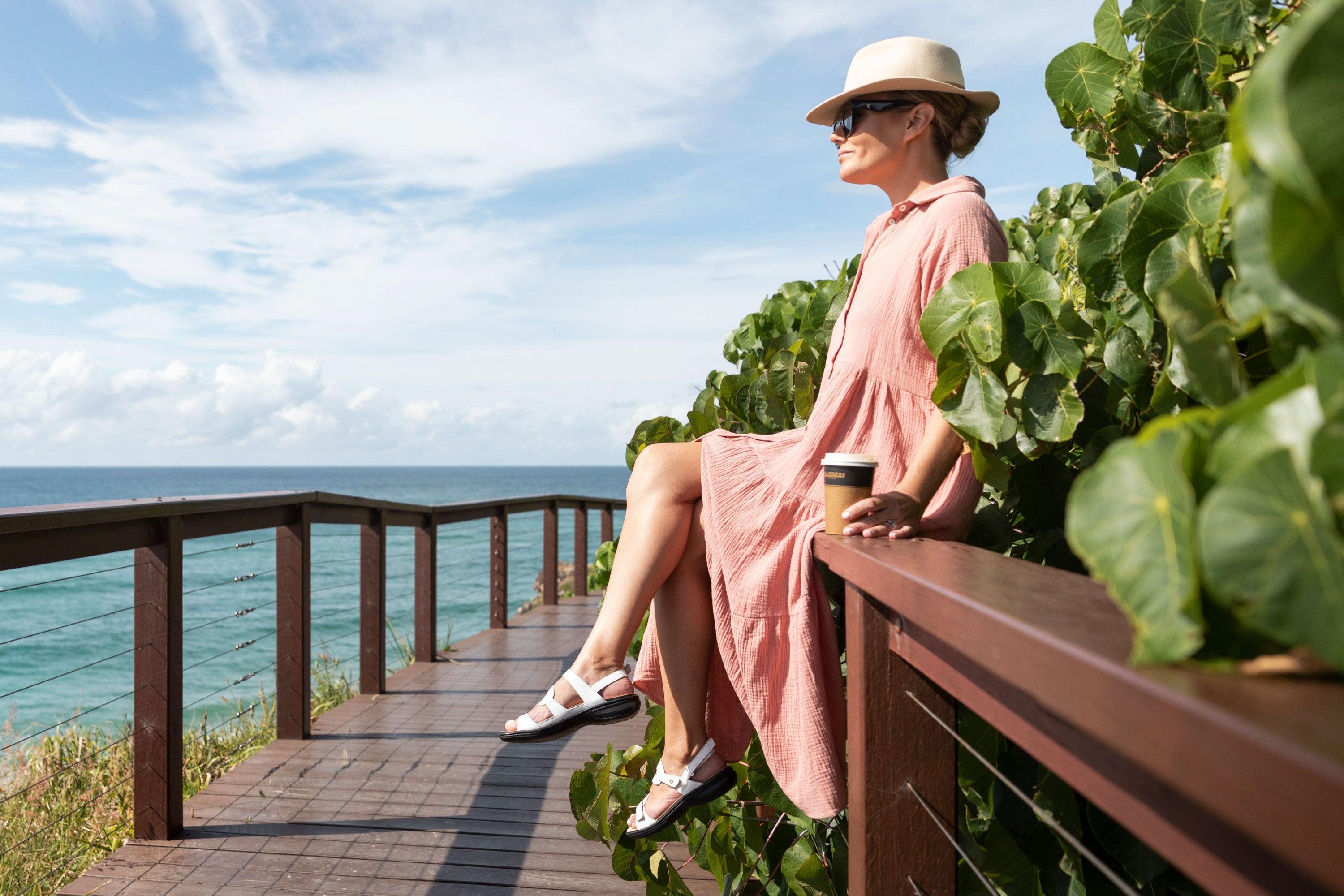Article: The evolution of women's shoes

The evolution of women's shoes
They say you can always judge a man (or woman) by the shoes they wear. After all, nothing brings joy like a beautiful shoe - it really is the ultimate finishing touch to an outfit. All judgment aside, this adage had a slightly different meaning in history than it does today. Back then, footwear was seen as fashion, unlike today where practicality and comfort thankfully have a seat at the table. From the first shoe ever invented, different styles through the ages each had their own use, role, and conveyed a sort of symbolism about the wearer’s status. Let’s take a look through the history of footwear and recognise how the evolution of women’s shoes has progressed over the years and what it looks like today.
Footwear in ancient times
Over time, footwear designs have evolved gradually and greatly. Heels - the go-to footwear style for women - weren’t always solely lacing the feet of ladies. As far back as the 10th century, Persian warriors donned high-heeled shoes when riding horses in battle. Their purpose was about practicality and support, as the heels assisted in keeping their shoes in the stirrups. Regardless of gender, they were worn by all right up until the 18th century, when elevated shoes fell out of favor with men. Then there’s summer’s favorite footwear - the sandal - which dates back to ancient times and similarly, has evolved into all shapes and forms over millennia: the gladiator sandal, simple slip-on shoes and the ever so comfortable sandals with back straps. In fact, when it comes to the evolution of women’s shoes, the sandal is one of the oldest forms of footwear. Its historic prevalence is apparent globally, from the wooden Japanese geta to the Roman caligae. Throughout the world and generations, sandals have been made out of varying materials in varying styles, ranging from cork to ox-hide. Unlike today - where socks and sandals are now an iconic fashion trend - sandals were most common in climate and terrain-dependent countries.
The roaring 20s to the 1940s
Traditionally, elevated shoes signified nobility, power and wealth; today they conjure up images of sore feet! The history of women’s shoes has developed in line with the changing needs of society. Comfort was not the most important factor, whereas today designers have recognised the importance of balancing comfort with style - form and function. Narrow-toe ankle boots were favored by women during the Victorian era. Laced up or buttoned, they were practical, comfortable and chic. The 1920s were devoted to a more glamorous footwear era of loafers, Mary Janes and T-straps. These more decorative styles matched women’s outfits in line with trends, particularly for evening wear, as hems became shorter. The latter two also supported the feet with ankle straps, while looking cool yet elegant and comfortable. By the 1930s, heeled sandals would continue to prove popular, especially for dancing the night away during the Golden Age. Then came the sultry slingbacks which date back to the 1940s. A time when ankle straps and exposed heels were donning the feet of pin-up girls with their short skirts, bare ankles and pointed toes.
The cultural decade of the 50s-60s
Roll on to the 1950s and court shoes really made their mark - both low heel and high heels. Low-heeled shoes, more playfully known as kitten heels, were introduced in the late 1950s. Considered a more appropriate choice over higher heels for young adolescent girls, they could stroll in these stylish mid-heel shoes as formal fashion attire. The razor-thin stiletto was another 20th century invention and just so happens to be the reigning champion for being one of the most uncomfortable footwear choices - perhaps not the best title to have in the history of shoes! However, the towering stiletto became the shoe of choice for most women due to its seductiveness, made popular by the likes of Marilyn Monroe. Skip to the swinging sixties where it was all about the young, the new and the modern. A time of experimentation in fashion, this era saw the existence of mid-heeled Go-Go boots, Cuban heels and flat sneakers - notably tennis shoes. Chunky heels became popular for D-I-S-C-O and were embraced by younger generations who could look stylish while feeling comfortable.
From the 90s to now
Despite having been around since the ancient Greeks, these chunkier soles continued to prove popular for a couple more decades, with the 90s celebrating platform shoes and block heel boots inspired by their favorite bands. It was a time of self-expression as subcultures entered the mainstream and this was reflected in women’s footwear. Enter the 2000s and whilst heels had not been forgotten, they began to lose their prominence in the history of shoes timeline. Women became more interested in flip-flops, sneakers and more comfortable (yet stylish) options like wedge sneakers. This has a lot to do with lifestyle changes and preferences evolving.
The contemporary fashion scene now is all about the sneaker. Variations have been around since the early 19th century and started originally as plimsolls, before developing into the sneaker style we all know and love. While sneakers were primarily made and worn for sporting activities, today they have quickly gained ground for their versatility and a new type was born - the modern-day sneaker. Sneakers had a reputation for being comfortable, casual and easy to move around in. Nowadays, they can be chic yet casual with the power to dress up jeans and mini skirts, or dress down pant suits and dresses. What’s not to love? The rise of the sneaker has a lot to do with how comfort is now a priority alongside looks - it’s one and the other. Gone are the days where we were happy to suffer to look good - we have learnt from those lessons with the majority of us falling victim to footwear problems, such as bunions and plantar fasciitis. Supportive footwear is now being prioritized, with comfortable options such as sneakers, orthotic sandals and wedges allowing us to keep up with trends while feeling supported as we take on our daily tasks. We no longer have to opt for one or the other thanks to these options which don’t hinder movement, especially shoes with arch support.
While trends come and go, many of these shoe styles continue to be favorable in the footwear world and remain a staple in women’s wardrobes and a signature on the catwalk. With the evolution of women’s shoes, however, true comfort is now in the equation (hooray!) and features such as arch support and proper fit have made this possible. We at revere understand that the modern woman requires all-day support in her shoes which is why we continue to strike the balance of comfort, support and style when designing women’s footwear. Take slingbacks for instance. At revere, we have modernized many of the classic styles to create cushioned, supportive and on-trend versions of Mary Janes, sandals with back straps and ankle boots. We continue to explore different ways of supporting the feet, reducing unwanted pain, concealing unsightly foot issues and preventing future issues - all the while looking fabulous. From adjustable straps on sandals to metatarsal raises in wedges to superior arch support in contoured footbeds. We believe that women who wear a custom orthotic, AFO or brace shouldn’t have to choose support over style - we provide both.
